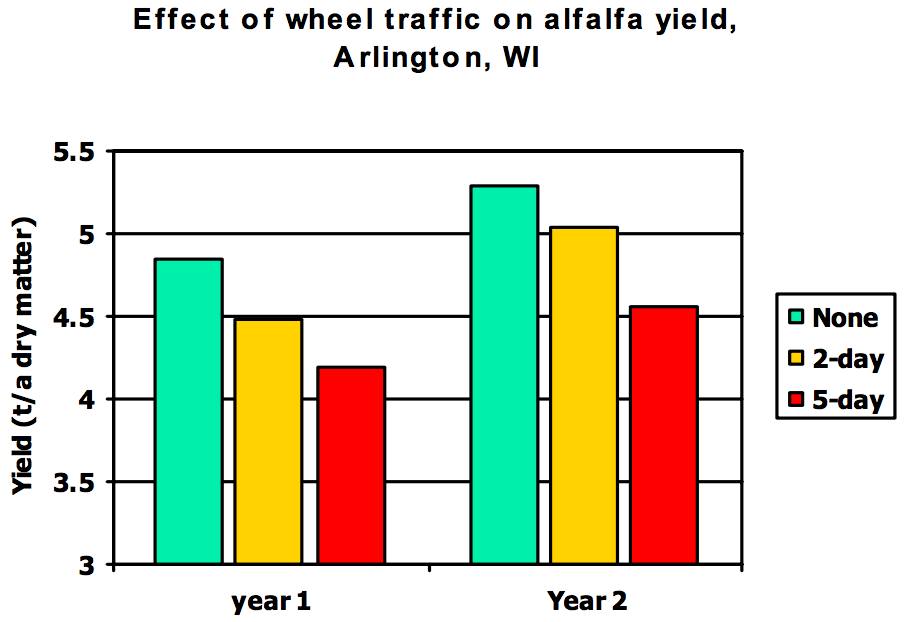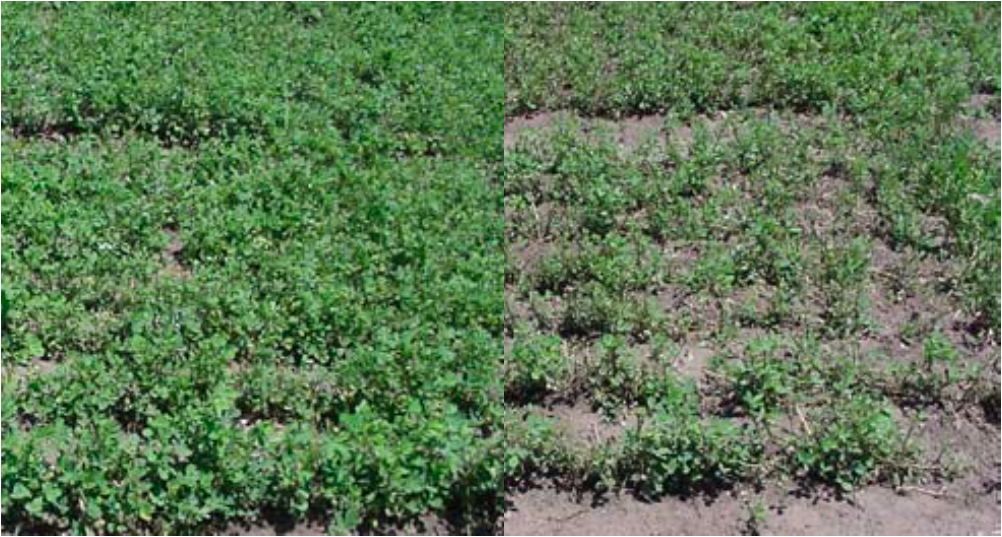Minimizing Wheel Traffic Damage to Alfalfa
by Dan Undersander
What damage is caused by wheel traffic?
Wheel traffic is known to increase soil compaction which, on some soils, reduces macropore air permeability, soil water infiltration and root development of alfalfa. All of which reduce yield. However, our research has indicated that the largest effect of wheel traffic is to break off regrowing alfalfa stems thereby reducing next cutting yield.
How much is yield of next cutting reduced?
 We compared harvesting (wheel traffic) at 2 days after cutting vs 5 days after cutting. As the graph shows, yield of the next harvest was reduced about 6% for each day delay in traffic application after cutting. Yield loss was largely due to reduction in number of stems from breakage by the tires. This is shown in the picture below where traffic was applied on the right 5 days after mowing but not on the left. Pictures were taken 10 days after mowing.
We compared harvesting (wheel traffic) at 2 days after cutting vs 5 days after cutting. As the graph shows, yield of the next harvest was reduced about 6% for each day delay in traffic application after cutting. Yield loss was largely due to reduction in number of stems from breakage by the tires. This is shown in the picture below where traffic was applied on the right 5 days after mowing but not on the left. Pictures were taken 10 days after mowing.
What is recommended to reduce yield loss from wheel traffic?
We believe the following management recommendations will reduce yield loss due to wheel traffic:
- Plant traffic tolerant varieties
- Use small tractors when possible to reduce soil compaction, i.e. don’t use larger tractor than necessary for raking, or leave loader on tractor when harvesting
- Avoid unnecessary trips across the field when harvesting:
- Mowing and conditioning in a single operation.
- Loaded wagons/trucks should be driven off the field in as little distance as possible.
- Do not drive on alfalfa field when harvesting crop of adjacent field.
- Consider using larger harvesting equipment to reduce the percent of field covered with wheel tracks (however, the affected area has greater weight applied to it). This could be another benefit of contract harvesting.
- Avoid use of tractors with dual wheels.
- Harvest (drive on field) as soon after cutting as possible:
- Make silage from higher yielding fields, hay from lower yielding fields.
- Use wide swath to allow hay/haylage to dry faster.
- Make wrapped bales to allow harvest of wetter hay.
- Apply manure immediately after harvest.
![]() Focus on Forage – Vol 10: No. 3
Focus on Forage – Vol 10: No. 3
© University of Wisconsin Board of Regents, 2008
Dan Undersander, Extension Forage Agronomist
University of Wisconsin – Madison
djunders@wisc.edu






